NSVI (No-Scalpel
Vasectomy International) in Haiti
September 1, 2010 - Day 3 -
Ouanaminthe |
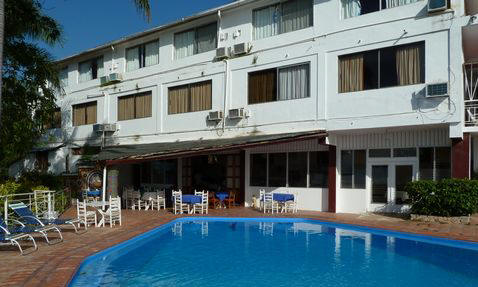 |
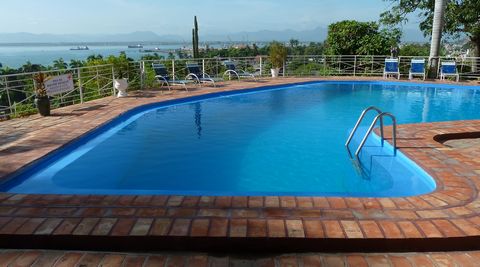 |
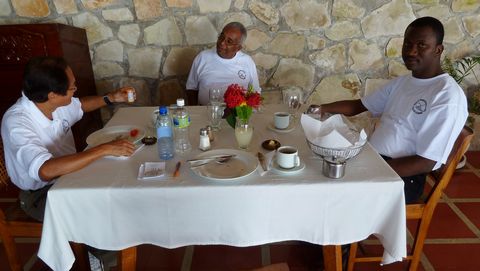 |
| Hotel Mont-Joli
is not new, |
but it
offers nice morning views of Cap-Haitien Harbor |
and a
hearty breakfast. |
|
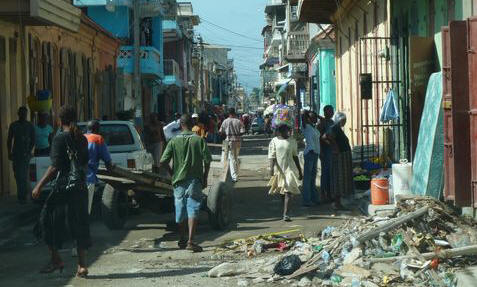 |
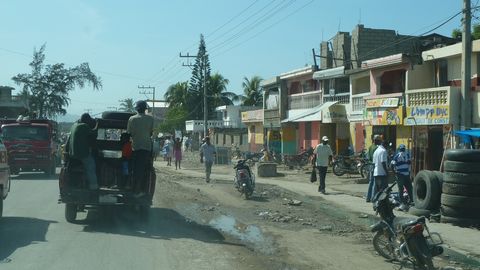 |
| To get to
Ouanaminthe, we had not navigate through city streets full of garbage
and rubble ... |
then
"suburban" street with puddles, mud, and potholes. |
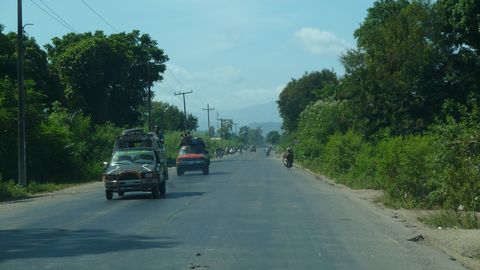 |
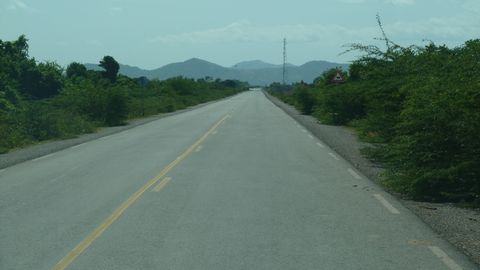 |
| The
outskirts of the city |
gave way to
one of the best roads in Haiti, so the drive to Ouanaminthe was very
pleasant. |
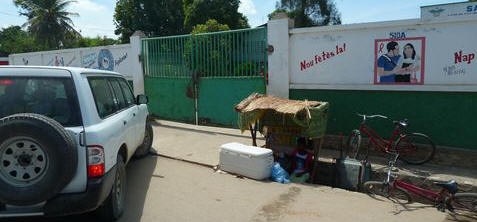 |
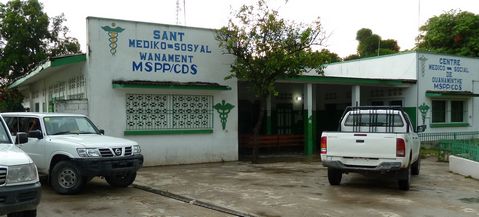 |
| Outside the gates of the Centre Medico
Social de Ouanaminthe are vendors waiting for
sales from the depths of the deep open roadside storm sewers. |
The hospital's facade is
modest ... |
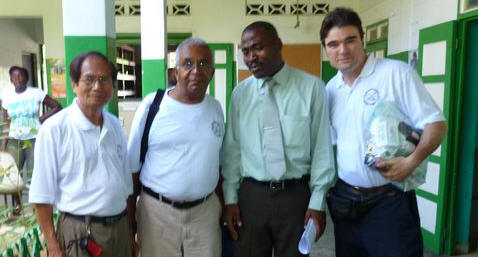 |
| ... but its administrator
gave us a warm welcome. |
|
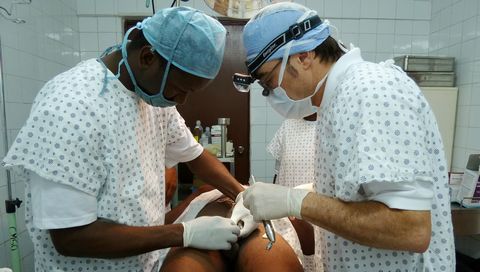 |
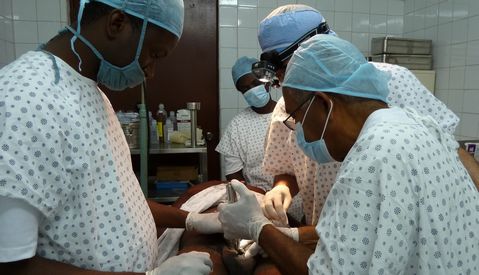 |
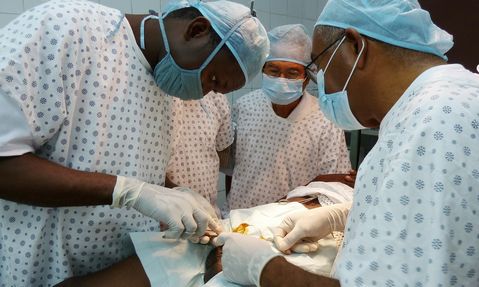 |
| For our 4
scheduled patients, there was not a big group of trainees, so it was
a great opportunity for Dr. Revolus to get plenty of hands-on
experience and for Dr. Lolagne to get some practice with the
MadaJet. The problem was that the patients had been told that NSV is
a 15-minute procedure. So when the first patient was in the
procedure room for over 45 minutes, the next 2 patients thought
something was wrong, so they left. |
|
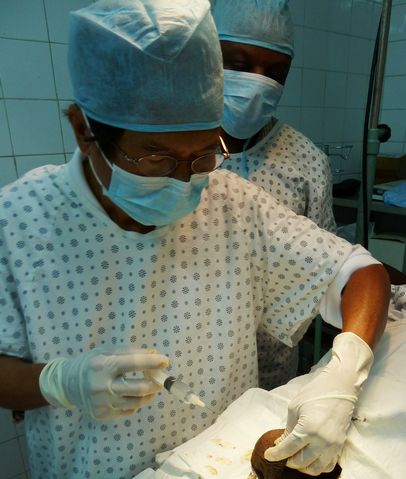 |
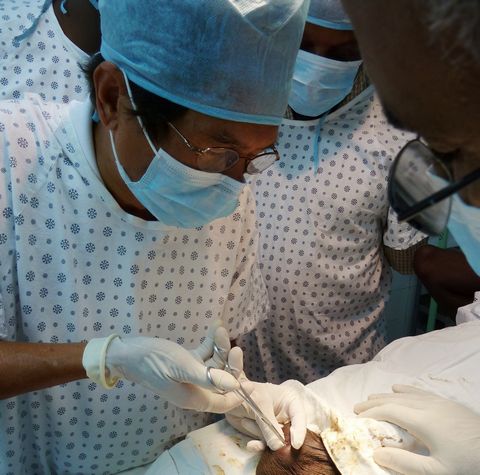 |
| With only one
patient remaining, Dr. Suarez reverted to the use of mini-needle
(30g) anesthesia to demonstrate that tiny needles can be just a
painless as the MadaJet for facilities and physicians who cannot
afford to purchase and maintain a MadaJet. Drs. Obelson, Pierre, and
Lolagne watch closely. |
|
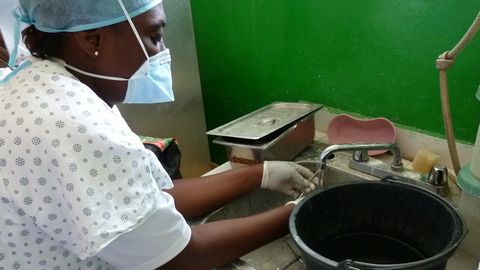 |
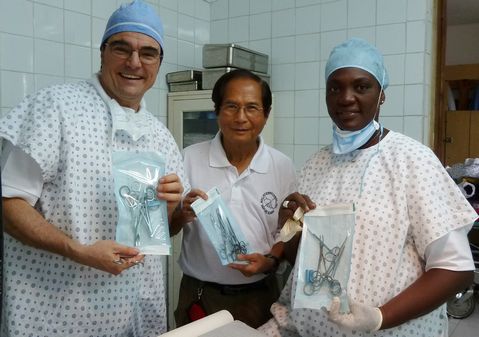 |
| Throughout our
journey through Haiti, Lisette was our facilitator, assistant,
patient comforter, and materials manager. Here she washes and
repackages instruments sets to be sterilized with an autoclave upon
arrival at Justinien Hospital in Cap Haitien next day. |
|
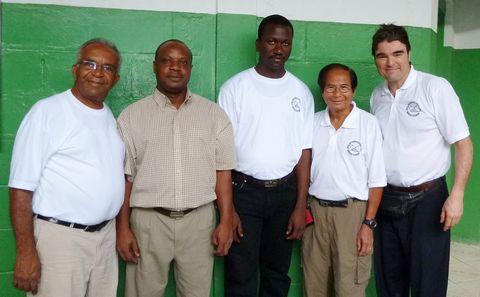 |
| A final group photo in
Ouanamithe: Drs. Fritz Lolagne, Gabriel Pierre (OB/GYN), Obelson
Revolus, Ramon Suarez, and Doug Stein. |
|
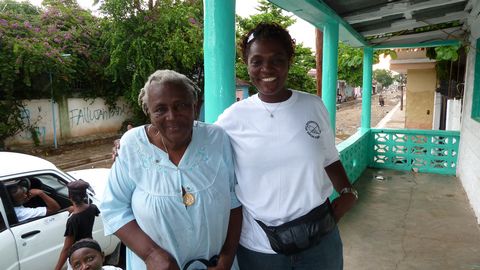 |
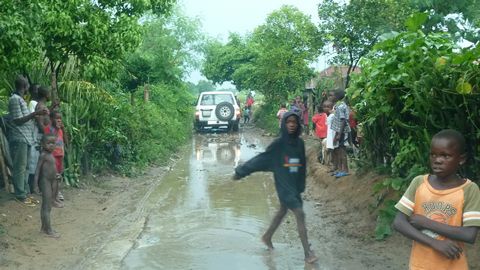 |
| Ouanamithe
is Lisette's home town, so, after our vasectomy work was done, we
went to visit Lisette's mother. She lives on a muddy, rocky,
potholed road with intact gutters but no pavement, unfinished
probably because of a lack of funds years ago. |
During a
side trip to see the border with the Dominican Republic, we took a
wrong turn and found ourselves on flooded streets lined with shacks,
litter, barefoot children, idle men, and pregnant women. |
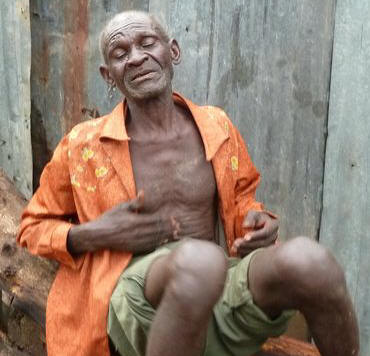 |
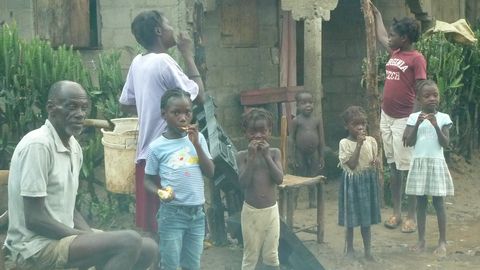 |
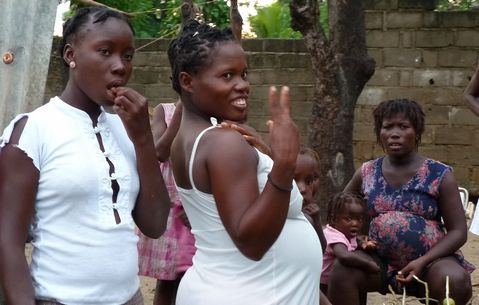 |
|
There is no Social Security or Medicare
for the elderly. This is a tropical country, so plants grow well.
Many people were chewing on something and there was very little
evidence of overt hunger. Given adequate nutrition, many young
women were pregnant and surrounded by children. I was
overwhelmed with the realization that without better family
planning, aid from outside Haiti will never be able to keep up
with the demand. Without jobs, income, skills, higher
education, organized sports, or hobbies, all that many Haitians
can do is make babies, and they are reluctant to give up that one
ability, even if doing so makes them better able to nurture the
children that they have. When women with 7 or 8 children die of
complications of subsequent pregnancies (placenta previa, abruptio
placenta, eclampsia), they leave behind orphans but they serve as
examples to other multiparous women, who may then be more
accepting of sterilization out of fear for their own survival. But
for lack of funds for anesthesia, tubal ligations must be
performed under local anesthesia ... when there are skilled
doctors to provide them! And such skilled doctors, like Dr.
Lolagne, are very rare. Also, local anesthesia can numb the skin
and abdominal wall, but not the tubes within the abdominal cavity.
So tubal ligations are, for most women, brutally painful
despite local anesthesia and, because of entry into the peritoneal
cavity, they must be performed in rather formal operating room
settings. Vasectomies performed under local anesthesia are
painless, quick, and require no more than a table to support the
reclining patient. Nonetheless, the fertility of men poses no risk
to them, With multiple partners and little concern for the
pregnancy-related risks to a life partner, why have a vasectomy?
Without incentives, vasectomy is a hard sell. |
|
 |
| Leaving
Ouanamithe that evening and driving west back to Cap Haitien, we
were treated to a delightful sunset. |
|
|
|
|
On to September 2, Day 4 - Cap-Haitien |
Third trip to Haiti: May/June 2011
|
|